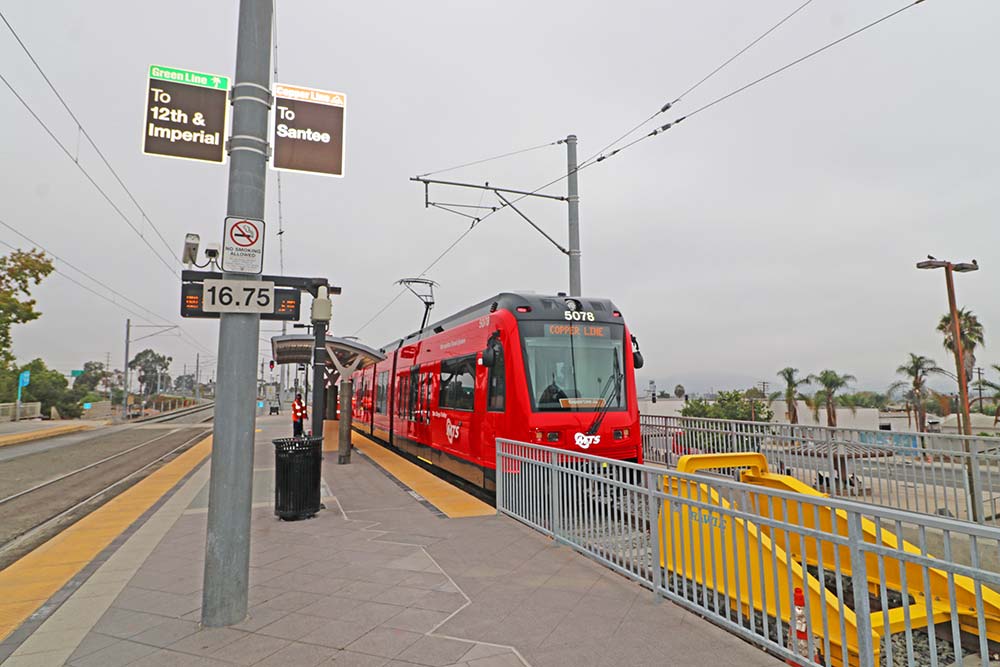San Diego MTS Alleviates Delays with Copper Line Trolley Service
10/8/2024

The San Diego Metropolitan Transit System (MTS) has launched service on its Copper Line – East County Connector. The line serves four stations between El Cajon Transit Center and Santee Trolley Station every 15 minutes every day for most of the day.
The new segment is to replace the existing Green and Orange Line trolley service north of the El Cajon Transit Center. The primary purpose of the line is to reduce the impact of the single-track segment between Gillespie Field and Santee. This segment can create a ripple effect of delays and missed transfers for passengers coming in and out of East County as only one train can enter or exit this segment at a time. With the Copper Line segment, trains will now turn at El Cajon Transit Center rather than Santee and alleviate the system from this bottleneck.
“MTS wants to make taking transit more reliable not only for East County residents, but for riders across the entire system,” said Stephen Whitburn, MTS board chair and San Diego City councilmember, District 3. “With the Copper Line, we are doing just that. It creates a better, more efficient transit system. I look forward to seeing how this new line segment positively benefits the rider experience across our transit system.”
MTS anticipates Green Line on-time performance will improve, meaning riders have more reliable transfer times and fewer delays. Furthermore, Green Line trolley service will be extended later at night, and all Sunday service will continue to El Cajon Transit Center, instead of alternating trains stopping short at the SDSU Transit Center. Operating with shorter trains, the Copper Line will reduce the wait times and lessen traffic at Santee intersections along Cuyamaca Street.
“We all want transit to be safe, timely, and efficient,” said Ronn Hall, MTS board member and City of Santee councilmember, District 2. “The Copper Line is not just a service enhancement; it’s also a system efficiency that saves taxpayer dollars at the same time. Overall, that’s a win-win for transit and taxpayers.”